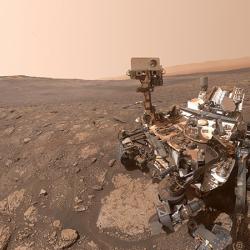NASA’s Mars Science Laboratory (MSL) ‘Curiosity’ rover first landed on the planet Mars in August 2012. Since that time, the rover has collected a continuous set of environmental measurements that have surprised and delighted the mission’s scientists. Over the last ten years, Curiosity has driven nearly 29 kilometres and ascended 625 meters as it explores its landing site the Gale Crater and the foothills of Mount Sharp. To this day, dramatically surpassing the mission’s initial 2 years objective, the rover’s measurement instruments remain fully operational. Some of the mechanical parts are showing signs of wear, but the sensors are still going strong, delivering unique data from the Red Planet.
In the following article, Lead Engineer from Vaisala’s Sensor Development team Harri Heinonen and Prof. Ari-Matti Harri, Head of Space Observation & Research at the Finnish Meteorological Institute (FMI), discuss why the data from MSL Curiosity is so important.



